Ortakoy Istanbul
April 6 - 30, 2007
Artists: Aslımay Altay, Ceren Oykut, Dilek Winchester, Elif Çelebi, Genco Gülan, Gonca Sezer, Gül Ilgaz, Mehmet Ali Uysal, Minna Henriksson, Murat Morova, Nancy Atakan, Neriman Polat, Nezaket Ekici, Silvia Erdem, Vanessa Garcia, Volkan Aslan, Yasemin Özcan Kaya and Yeşim Ağaoğlu.
Actually, the term, “From Owner with View”, appears regularly in realestate advertisements in Turkish newspapers. The idea to use this term as the heading for this exhibition evolved from the emergence of an agreement between the property owners and artists/organizer regarding the right to use their space for this exhibition for a specific length of time. In addition to the possibilities of being together as transient guests for an unexpected period of time, in response to the view of the city from the exhibition space, the artists will create a ‘situational’ viewpoint as a commonality for their work. The idea of coming together, without being attached to an objective result, and establishing communication for creative interaction is the starting point of the exhibition. In this way, through the production of contemporary art, the exhibition aims to bring to unit different perceptions and thoughts created within local art community contexts. Alongside aesthetic norms, artists producing messages with sincere perspectives and others with critical approaches are positioned in a temporary space and for a temporary length of time.
The underlying text for the exhibition includes a much broader perspective about life. We are aware that the situational viewpoints found in the participating artists’ discourses result from the sociological pain felt about dominate contemporaneous landscapes lived as personal drama. Hopelessness, suspicion, anxiety, and stress surround the forgetfulness brought by rapid transportation of conformism. All the organizations, intricate actual/media forms, reduce everything to the momentary/daily that feeds the loss of memory. Artists come forward with creativity and awareness, as a protective mental reflex against destruction of memory. Today, artists symbolise new and hybrid forms of existence by pointing out shared values and problems. Furthermore, the exhibition entitled “From Owner with View”, is created from productions that wish to contribute creative sensitivity to daily life and participative content. In one respect, the exhibition expresses hopes otherwise difficult to explain in other times/spaces/conditions and argues that simply being together in this period of extreme individuality is in itself an artistic search for an answer.
Actually, being together can unit our shared experiences of shifting place and identity as it brings to life hopes about the possibilities of a needed optimism.
Derya Yücel
Curator
In this exhibition, Aslımay Altay used a traditional technique to prepare two quilts that she displayed on adjacent walls. Quilts represent an example of a disappearing tradition that is being destroyed by today’s methods of modern industrial production. Two of the artist’s interpretations, first, the Galata Tower and second, the well-known Istanbul profile showing the historical peninsula, were embroidered on the surface of the quilts. Ceren Oykut covered the windows of a room in the exhibition space with a design entitled “Curtain”. The artist transferred her design onto transparent paper using a classical technique of drawing. Her designs depict ‘city’ landscapes showing the chaotic daily life of Istanbul’s inhabitants. In her work, obviously influenced by caricature and miniature, while using techniques and illustrating scenes depicting irony and satire, the artist emphasized the basic elements of design. Dilek Winchester’s work entitled “Cousin”, consists of a set of binoculars, a photograph and a page from her book, “Liquor and Chocolate”, written specifically for this show. The book was written in collaboration with the psycho-dramatist, Arzu Soysal. Taking inspiration from the technique of psychodrama, a game was designed and played during a series of visits by guests to a home in 2006. In the game, the player chooses a fruit and a vegetable to represent her/himself and the other members of the family. The book was created from the organization of texts and still life photographs used to document the process. For this exhibition, the text explaining the player named Zubeyde Abla and the photograph of a stuffed pepper that represented her in the game was chosen.
In the kitchen of the former resident of this exhibition space, Elif Çelebi established an alternative context. Using photographs of objects commonly found in ordinary kitchens, the artist arranged these images in appropriate places within the context of a kitchen. Furthermore, as if the objects were still in their appropriate places, she placed figurines and cups on the shelves, a potted flower on the floor and medicine bottles on the refrigerator. In this manner, using the relationship between memory and image, the artist emphasized the memories of the resident’s former owner. As a continuation of his ‘Twins’ series and referring to the works of the performance artist, Angie Hiesl, Genco Gülan, in his performance piece entitled “2”, established a relationship between the spectator / exhibition / space / environment, by staging a simple game that puts the spectator into an active position. After accepting the invitation to participate and having his/her eyes blindfolded by two players, the spectator joins the game. As the game progresses, the participant realizes that power does not destroy, but only changes a subject’s characteristics by transforming him/her into an object. For instance, this game creates an enjoyable partnership and uses simple surprises to suggest ways to open the doors of ones’ imagination. By using the effects of the characteristics of the space on the participant and by bringing both the exhibition and views of Istanbul into the event, the game proposes an alternative process of perception. In this exhibition, Gonca Sezer’s work, a composition of photographs entitled, “I gave you my heart”, refers to the poetic-aesthetic approach to feminine identity. By repetition of images showing real women’s hands together with documentation of doorknobs made in the form of female hands from the city of Hatay, the artist creates a narrative. Hands holding hearts represent the feminine situation and point out the emotional perspective of the artist’s interpretation. Another work dealing with identity, tradition and life is Gül Ilgaz’s “Holding on”. On the window of a room facing the Bosphorus Sea, this work is presented to the spectator. Using a digital process to print her image onto tulle curtains, the artist established a balance between the soft flowing material and her strong statement. Because, in her opinion, a decisive and strong commitment is needed to ‘hang on’ to the fragility of life, art, and time. Two separate works by Mehmet Ali Uysal who deconstructs and then reconstructs the visual perception of the spectator, can be seen in this exhibition. In the installation entitled “The ‘E’ State of Love”, the artist arranged horizontally one half of a red heart shaped wooden structure onto a mirror. When the spectator looks at the sculpture carefully, by combining the reflection in the mirror with the object on top, he/she can observe a ‘heart’ shaped form. The paper plane the artist placed on a window in the space also plays with visual perception. Half of the plane that seems to hang in the sky is inside the space and the other half is on the other side of the window pane. A work made in 2005 by Minna Henriksson, an artist from Helsinki, during a guest residency program at the Platform Garanti Contemporary Art Center presents observations about relationships within the Istanbul art scene. By the end of her stay in Istanbul, she had combined information about complicated personal relationships, positions of strength, relationships formed around central figures, and gossip from the art community into a visual network that she presented as a ‘map of relationships’. Of course, this map by including emtional stories and explanations of situations and events covers more than the artist’s observation. For this exhibition, the artist updated the map. To the exhibition, Murat Morova, brought accidentally discovered images of the floor plan of a section of the Atik Valide Tower and of the Üsküdar Toptaşı Prison, a place that today is used as a cultural center, but previously served as a jail for numerous cultural prisoners. On both of these digital prints shown as two identical photographs, he inserted the expression “You Are Here”. In reality, these expressions written on a transparent material change the meaning. The observed space, the thought space and the perceived space, just for an instant, mix together to exchange cultural values with narrative codes. Nancy Atakan included two separate works in the exhibition, in the installation named “Room No. 34”, she moved elements from daily life into an artistic context. Photographs of beds, defined as feminine, have been taken from her private life as witness to happiness, pain, pleasure, erotic, sickness, anger, betrayal, innocence, birth and death. Photographs of 104 beds, an example of all the beds she has slept in, have been stacked like bricks to form a wall in front of a room installation containing a new bedroom scene. The installation, reminiscent of a hotel room, can be interpretated as the artist’s desire to share with spectators one moment from her private life. In her second piece, “A Sea of Possibilities”, she presents a book installation that includes a poetic text she has written and five translations of this text. This work presents to us the impossibility of objectivity and the narrative dimension of reality. In her opinion, something translated can never completely coincide with nor replace the other because an additional element comes between language and discourse. On the other hand, she praises this space between that allows for changability and diverse indviduality as she points out the infinity of possibilities as one accepts or rejects choices.
A single bed, an old stove, two photographs on a wall, unmatched furniture and a television in a dark room without a view awaits the spectator at the back of the exhibition space. On the television a woman pacing back and forth in an unidentified corridor with an empty gun that she occasionally places against her forehead before pulling the trigger accompanied by a woman’s voice singing a well known song by Ahmet Kaya who was Turkish singer, can be observed. Neriman Polat’s video entitled, “I blow my head and go…” depicts the solemnity of a bachelor’s room while the painful, complicated words of the song expose the possibility of other lives and other life styles. As the song progresses, it presents a subsconscious voice that turns into rebellion... Another video work in the show, “Ammo” shows a performance piece made by Nezaket Ekici. In this work, that could be defined as a video performance, the artist’s hands move slowly on a white balloon that entirely fills the screen. The red fingernails on the white balloon create visual opposites as it also brings to mind other known points of reference. On the screen, the hands moving very slowly to squeeze the balloon combined with the sound of the fingernails on the balloon transmits an increasing feeling of suspense in the waiting spectator. As the fingernails stick into the balloon, a noise resembling a gunshot can be heard. When the balloon explodes, the artist appears dressed in a military uniform that leaves the spectator in an absurd situation. Quickly, this situation is altered because absurdity exchanges places with a surprising and radical meaning. The innocent suspence and explosion of a balloon is replaced with an opposite context of war. In this show, you can also see work about ‘water’ that Silvia Erdem has been producing for some time. In a room facing the sea, one is confronted with two walls of water design compositions that are juxtapositioned across from windows overlooking real views of water. Minimal, simple, horizontally positioned work produced with a variety of techniques such as graphite on paper, drawings from photographs, and a light box display relevant subject matter. Using a wistful and elegant style, the work gives a strange harmonious and peaceful feeling to the spectator.
Vanessa Garcia takes part in the show with a video work that presents reality both fatalistically and indirectly. In a black and white film, a nude woman who appears to be sleeping reclines on the ground. The camera travels over the body of the woman and occasionally moves to show images from a city while in the background music can be heard that gives the film a sad and emtional dimension. In actuality, the film was made in 1925 by the German photographer Hazel Walker who captured these images. Using a collage technique, Garcia organized the photographs of an unknown woman who had committed suicide. Rather than glorifying objects, in this exhibition, Volkan Aslan captures meaning from the real and ephemeral with a deconstrutive gesture. Rather than construct a new object, the artist attaches meaning to an object already in the space. In this instance, he choses a lightbulb in an empty room and arranges it in an inappropriate manner. Hanging from the ceiling are meters of electrical wire that intertwine around and around in the center of the room ending with a single shining lightbulb. By preventing the spectator to enter, the artist refuses to establish a connection between the outside world and a single lightbulb shining in the middle of an empty shabby room. A vulnerable, alienated, and lonesome work that can only be viewed through the glass in a closed door, shows a deep emotional breakdown described by its name, “depression”. In this manner, the art work can be seen as a ready-made that continues to have the function of a tool and a symbol.
In her work named “Political World Map / Scale 1/2007”, Yasemin Özcan Kaya suggests a painful and non reformable world in her photograph of a watermellon that has been stretched to the point of explosion. This work is not only sociological and critical, but also existential. In a modern world far removed from humanity, the artist rejects the type of identity, the social role, and her position in this life style. By taking a brave step, she uses a metaphoric language to communicate to the spectator a message about the destructive effect of daily life on her own existence. Her other photographic work entitled “Not to be Involwed in”, requires a bit of effort to see in its hiding place. Related to the former work, this piece, in which life is reduced to only the momentary and daily, acts like a mirror to show that we are ignoring everyone except ourselves and failing to make efforts against socialogical happenings. In the flies’ mating scene, she uses irony to expose feelings of guilt about our failure to register the existence of today’s massive population. Yeşim Ağaoğlu includes two works in the exhibition. The first is a photography/installation made specifically for the exhibition space and the other is an instantaneous and accidental composition arranged on the wall. In the artist’s accidentally photographed work of an incomplete construction site, on the outside of a building written with huge letters, one can read Ataturk’s message “My characteristics are freedom and independence”. This image was photocopied and reproduced to cover one wall of the exhibition space. In her other work, “Those Were The Days”, using photographs the artist protects and saves the appearance of the space before changes were made to turn it into an exhibition area. These photographs are exhibited on the mirror of an old dressing table found in the space. With photographs and furniture as tools, the memory of the changed space is exposed. Even though it has been separated from its function, the artist wishes to share and lengthen the memory of a mirror that no longer exists and has been turned into a fake.

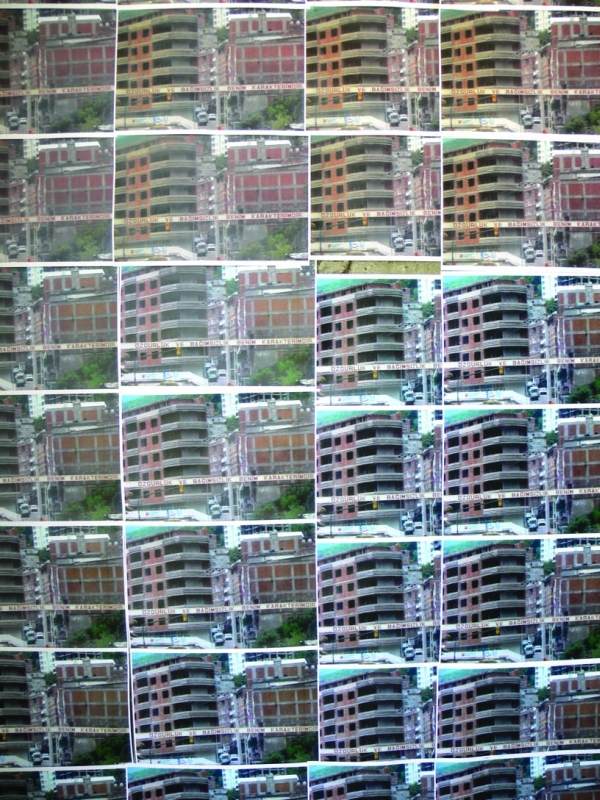
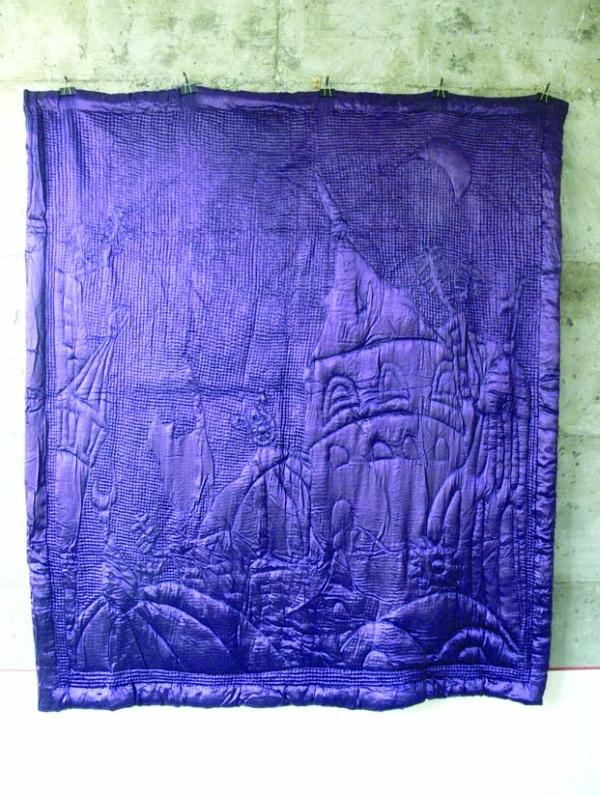
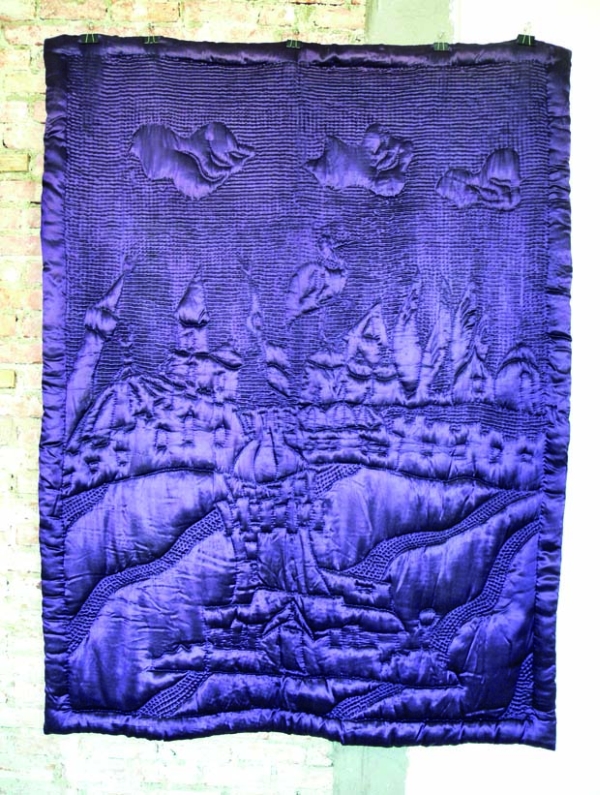
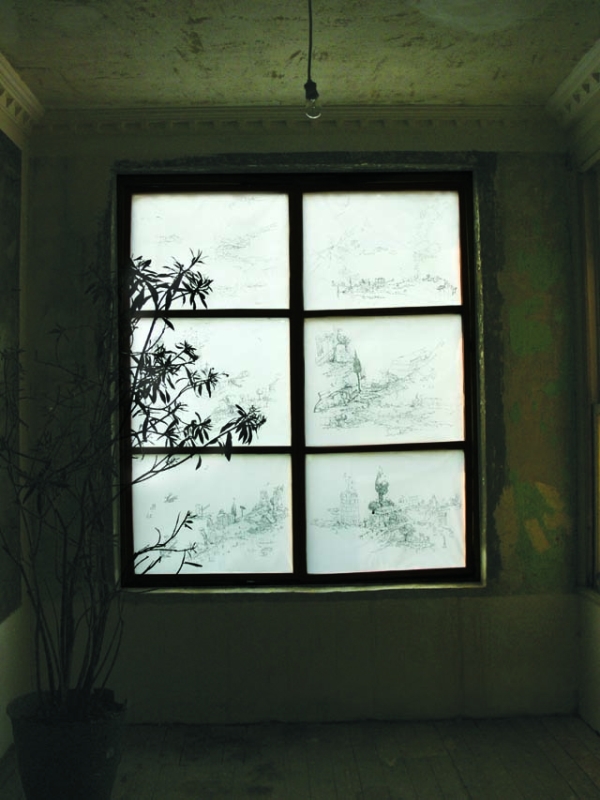
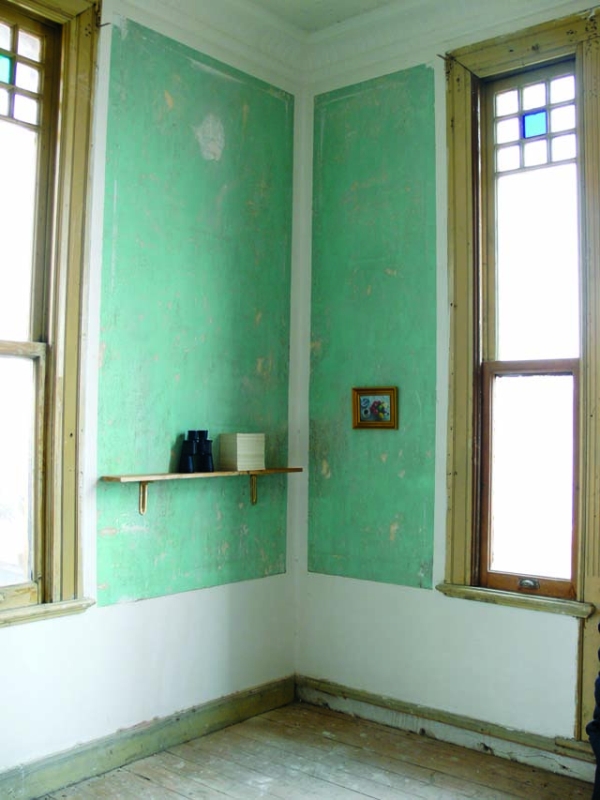
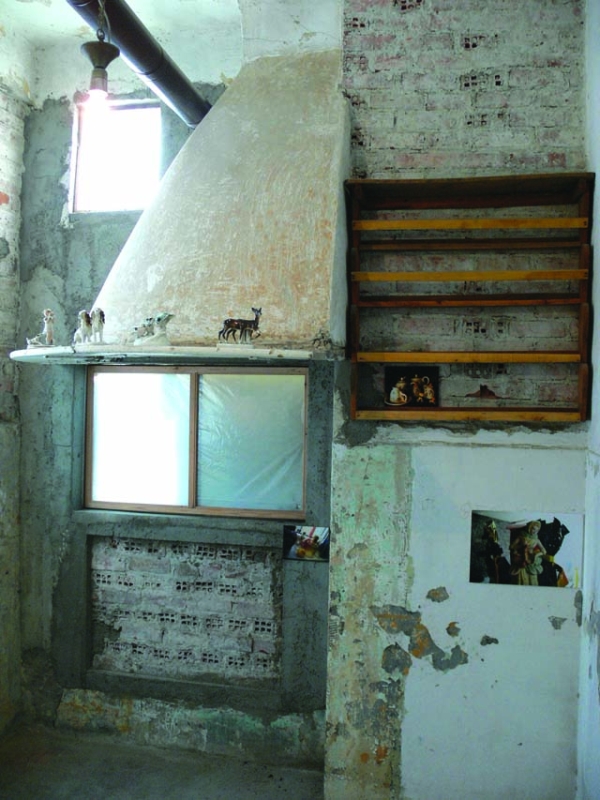
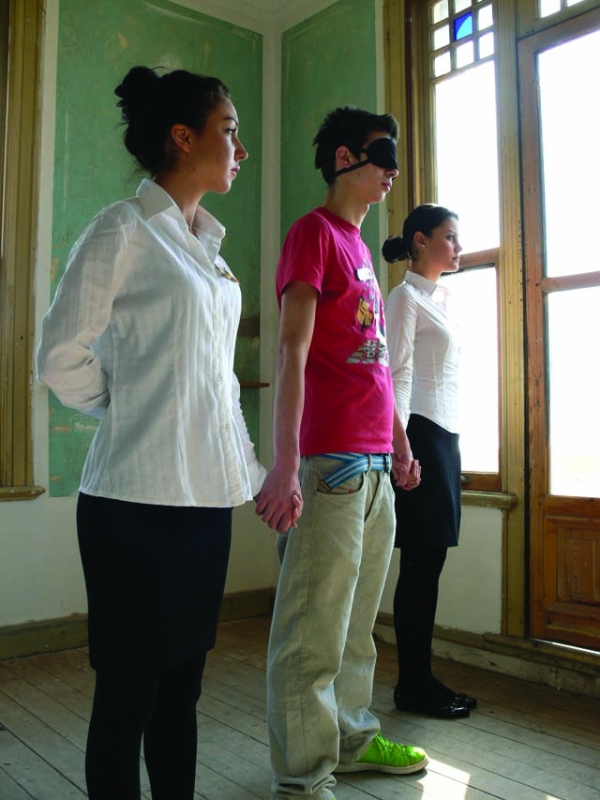
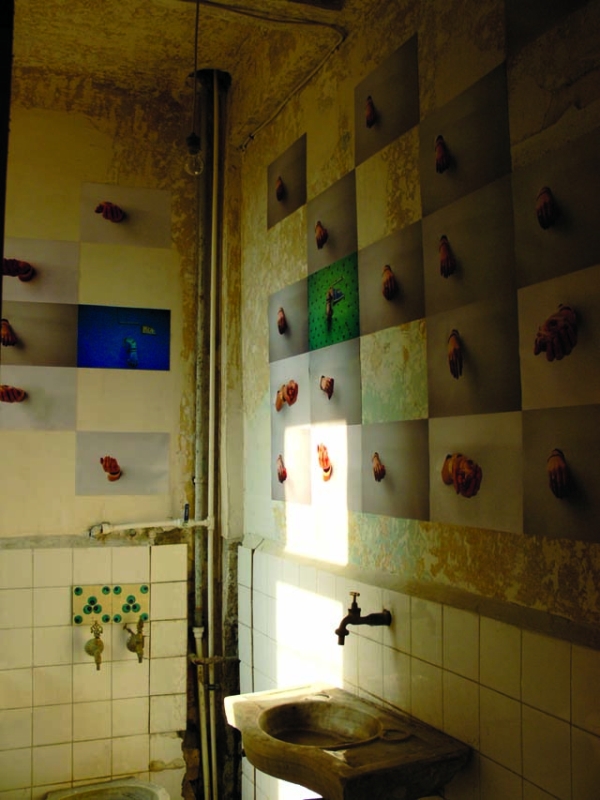
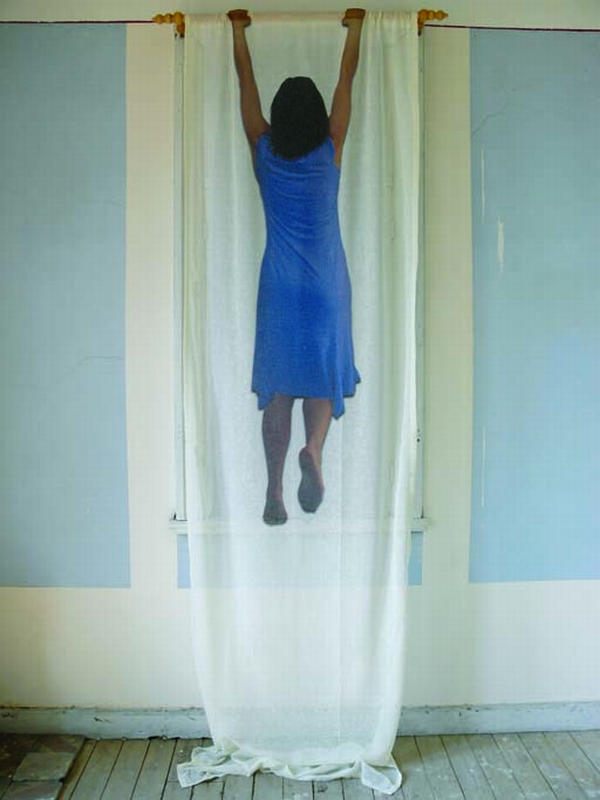
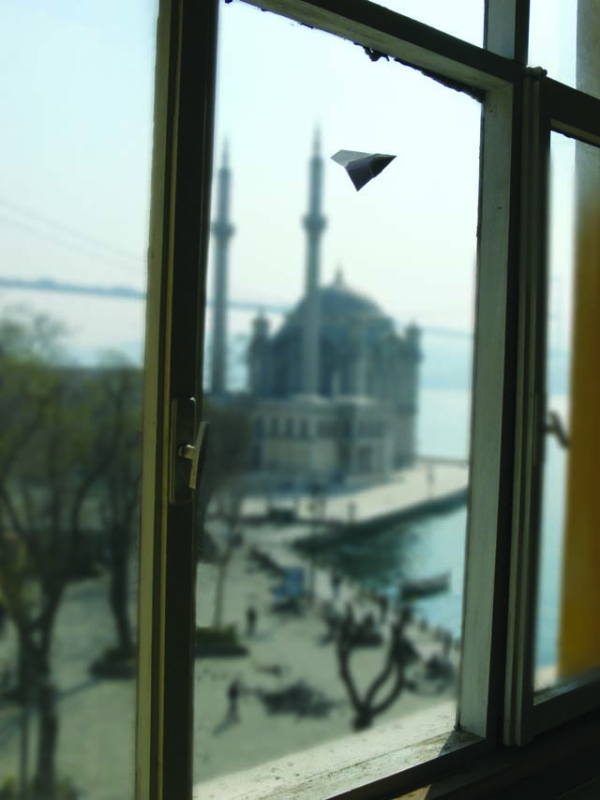

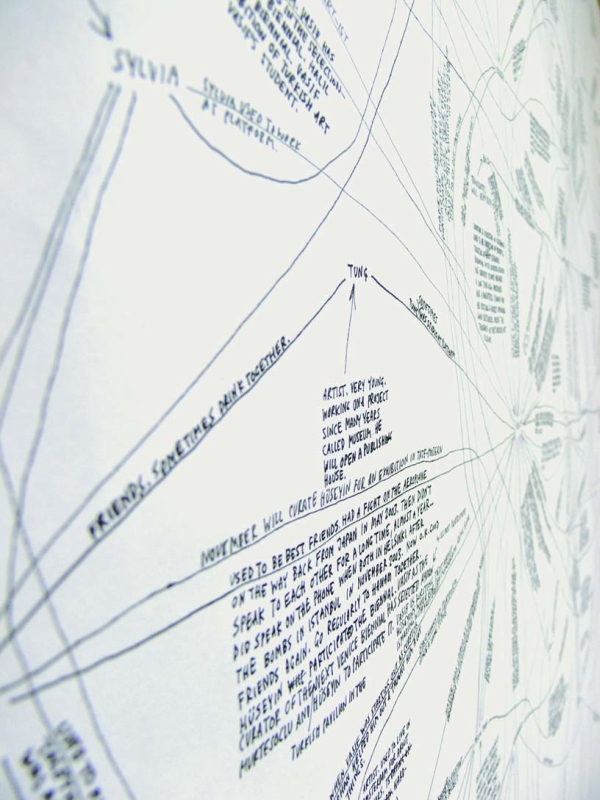
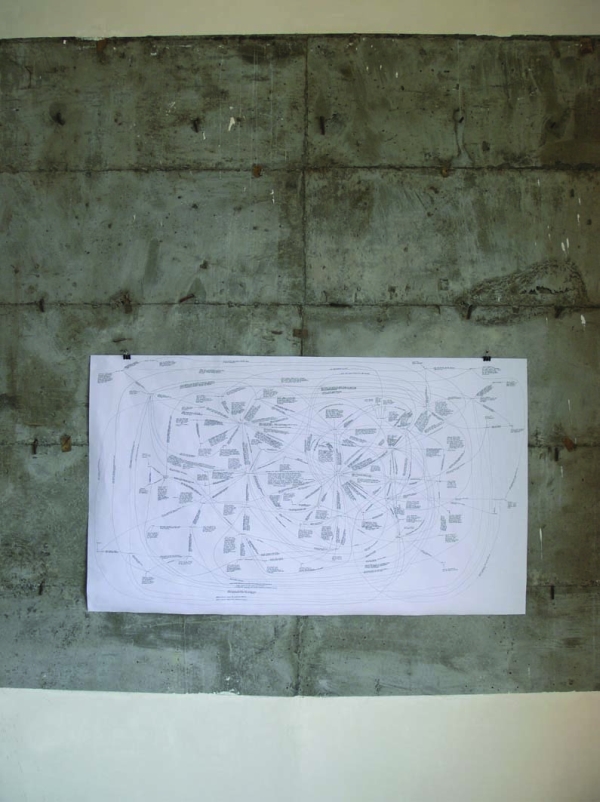

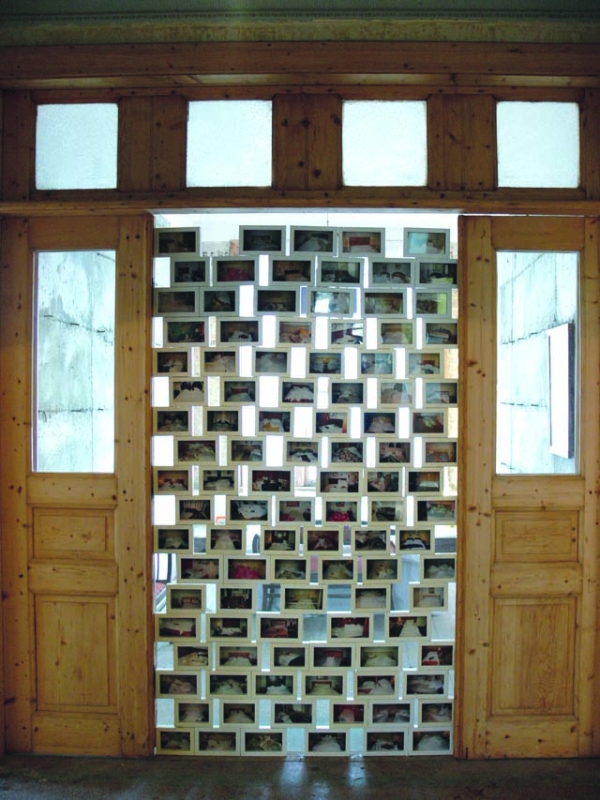
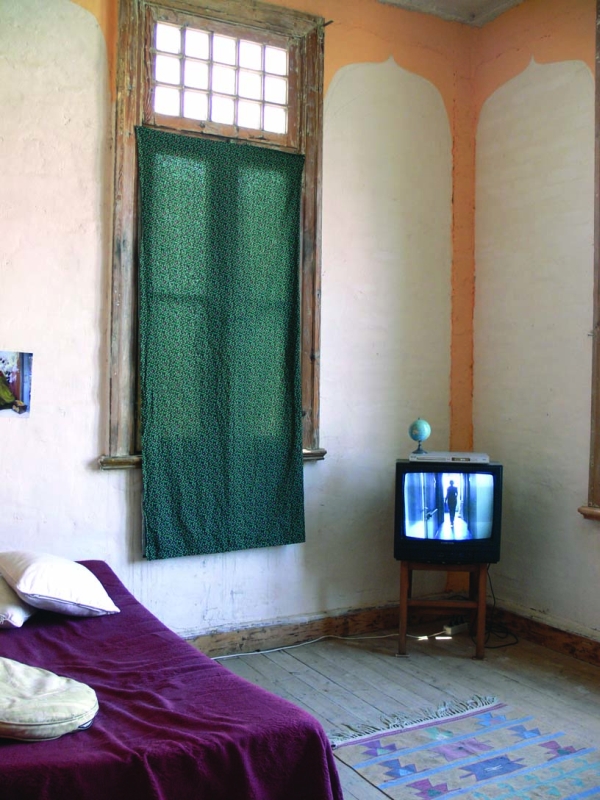

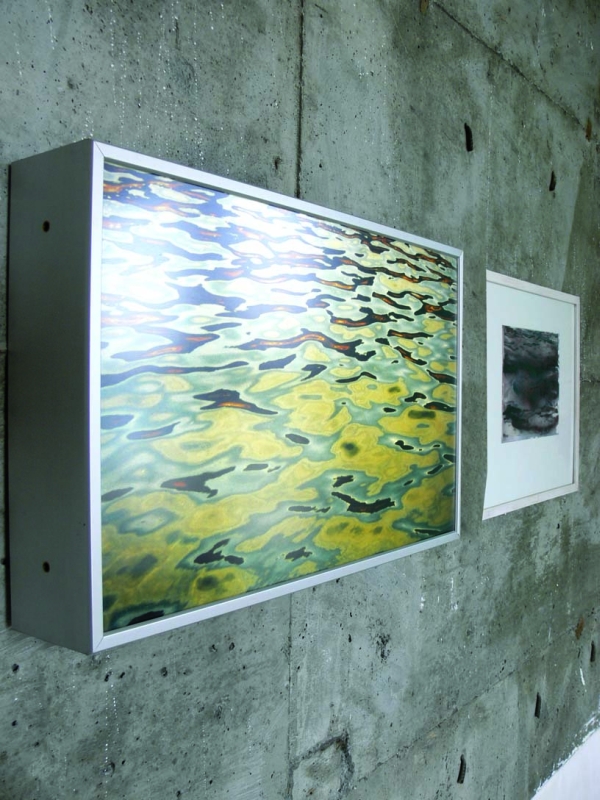
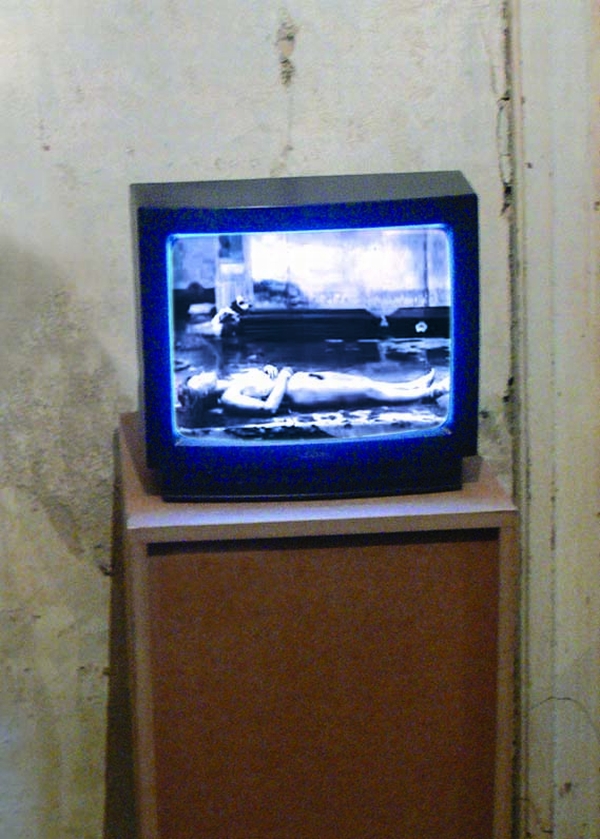
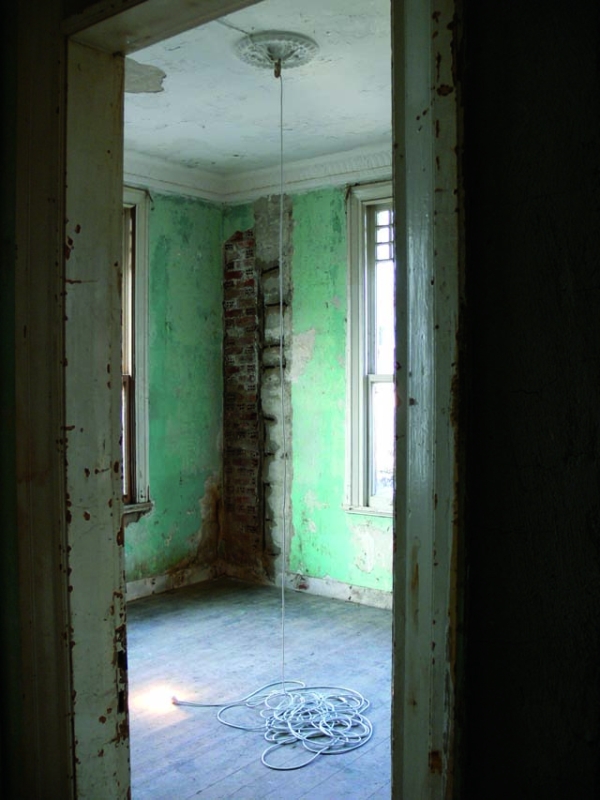
April 6 - 30, 2007
Artists: Aslımay Altay, Ceren Oykut, Dilek Winchester, Elif Çelebi, Genco Gülan, Gonca Sezer, Gül Ilgaz, Mehmet Ali Uysal, Minna Henriksson, Murat Morova, Nancy Atakan, Neriman Polat, Nezaket Ekici, Silvia Erdem, Vanessa Garcia, Volkan Aslan, Yasemin Özcan Kaya and Yeşim Ağaoğlu.
Actually, the term, “From Owner with View”, appears regularly in realestate advertisements in Turkish newspapers. The idea to use this term as the heading for this exhibition evolved from the emergence of an agreement between the property owners and artists/organizer regarding the right to use their space for this exhibition for a specific length of time. In addition to the possibilities of being together as transient guests for an unexpected period of time, in response to the view of the city from the exhibition space, the artists will create a ‘situational’ viewpoint as a commonality for their work. The idea of coming together, without being attached to an objective result, and establishing communication for creative interaction is the starting point of the exhibition. In this way, through the production of contemporary art, the exhibition aims to bring to unit different perceptions and thoughts created within local art community contexts. Alongside aesthetic norms, artists producing messages with sincere perspectives and others with critical approaches are positioned in a temporary space and for a temporary length of time.
The underlying text for the exhibition includes a much broader perspective about life. We are aware that the situational viewpoints found in the participating artists’ discourses result from the sociological pain felt about dominate contemporaneous landscapes lived as personal drama. Hopelessness, suspicion, anxiety, and stress surround the forgetfulness brought by rapid transportation of conformism. All the organizations, intricate actual/media forms, reduce everything to the momentary/daily that feeds the loss of memory. Artists come forward with creativity and awareness, as a protective mental reflex against destruction of memory. Today, artists symbolise new and hybrid forms of existence by pointing out shared values and problems. Furthermore, the exhibition entitled “From Owner with View”, is created from productions that wish to contribute creative sensitivity to daily life and participative content. In one respect, the exhibition expresses hopes otherwise difficult to explain in other times/spaces/conditions and argues that simply being together in this period of extreme individuality is in itself an artistic search for an answer.
Actually, being together can unit our shared experiences of shifting place and identity as it brings to life hopes about the possibilities of a needed optimism.
Derya Yücel
Curator
In this exhibition, Aslımay Altay used a traditional technique to prepare two quilts that she displayed on adjacent walls. Quilts represent an example of a disappearing tradition that is being destroyed by today’s methods of modern industrial production. Two of the artist’s interpretations, first, the Galata Tower and second, the well-known Istanbul profile showing the historical peninsula, were embroidered on the surface of the quilts. Ceren Oykut covered the windows of a room in the exhibition space with a design entitled “Curtain”. The artist transferred her design onto transparent paper using a classical technique of drawing. Her designs depict ‘city’ landscapes showing the chaotic daily life of Istanbul’s inhabitants. In her work, obviously influenced by caricature and miniature, while using techniques and illustrating scenes depicting irony and satire, the artist emphasized the basic elements of design. Dilek Winchester’s work entitled “Cousin”, consists of a set of binoculars, a photograph and a page from her book, “Liquor and Chocolate”, written specifically for this show. The book was written in collaboration with the psycho-dramatist, Arzu Soysal. Taking inspiration from the technique of psychodrama, a game was designed and played during a series of visits by guests to a home in 2006. In the game, the player chooses a fruit and a vegetable to represent her/himself and the other members of the family. The book was created from the organization of texts and still life photographs used to document the process. For this exhibition, the text explaining the player named Zubeyde Abla and the photograph of a stuffed pepper that represented her in the game was chosen.
In the kitchen of the former resident of this exhibition space, Elif Çelebi established an alternative context. Using photographs of objects commonly found in ordinary kitchens, the artist arranged these images in appropriate places within the context of a kitchen. Furthermore, as if the objects were still in their appropriate places, she placed figurines and cups on the shelves, a potted flower on the floor and medicine bottles on the refrigerator. In this manner, using the relationship between memory and image, the artist emphasized the memories of the resident’s former owner. As a continuation of his ‘Twins’ series and referring to the works of the performance artist, Angie Hiesl, Genco Gülan, in his performance piece entitled “2”, established a relationship between the spectator / exhibition / space / environment, by staging a simple game that puts the spectator into an active position. After accepting the invitation to participate and having his/her eyes blindfolded by two players, the spectator joins the game. As the game progresses, the participant realizes that power does not destroy, but only changes a subject’s characteristics by transforming him/her into an object. For instance, this game creates an enjoyable partnership and uses simple surprises to suggest ways to open the doors of ones’ imagination. By using the effects of the characteristics of the space on the participant and by bringing both the exhibition and views of Istanbul into the event, the game proposes an alternative process of perception. In this exhibition, Gonca Sezer’s work, a composition of photographs entitled, “I gave you my heart”, refers to the poetic-aesthetic approach to feminine identity. By repetition of images showing real women’s hands together with documentation of doorknobs made in the form of female hands from the city of Hatay, the artist creates a narrative. Hands holding hearts represent the feminine situation and point out the emotional perspective of the artist’s interpretation. Another work dealing with identity, tradition and life is Gül Ilgaz’s “Holding on”. On the window of a room facing the Bosphorus Sea, this work is presented to the spectator. Using a digital process to print her image onto tulle curtains, the artist established a balance between the soft flowing material and her strong statement. Because, in her opinion, a decisive and strong commitment is needed to ‘hang on’ to the fragility of life, art, and time. Two separate works by Mehmet Ali Uysal who deconstructs and then reconstructs the visual perception of the spectator, can be seen in this exhibition. In the installation entitled “The ‘E’ State of Love”, the artist arranged horizontally one half of a red heart shaped wooden structure onto a mirror. When the spectator looks at the sculpture carefully, by combining the reflection in the mirror with the object on top, he/she can observe a ‘heart’ shaped form. The paper plane the artist placed on a window in the space also plays with visual perception. Half of the plane that seems to hang in the sky is inside the space and the other half is on the other side of the window pane. A work made in 2005 by Minna Henriksson, an artist from Helsinki, during a guest residency program at the Platform Garanti Contemporary Art Center presents observations about relationships within the Istanbul art scene. By the end of her stay in Istanbul, she had combined information about complicated personal relationships, positions of strength, relationships formed around central figures, and gossip from the art community into a visual network that she presented as a ‘map of relationships’. Of course, this map by including emtional stories and explanations of situations and events covers more than the artist’s observation. For this exhibition, the artist updated the map. To the exhibition, Murat Morova, brought accidentally discovered images of the floor plan of a section of the Atik Valide Tower and of the Üsküdar Toptaşı Prison, a place that today is used as a cultural center, but previously served as a jail for numerous cultural prisoners. On both of these digital prints shown as two identical photographs, he inserted the expression “You Are Here”. In reality, these expressions written on a transparent material change the meaning. The observed space, the thought space and the perceived space, just for an instant, mix together to exchange cultural values with narrative codes. Nancy Atakan included two separate works in the exhibition, in the installation named “Room No. 34”, she moved elements from daily life into an artistic context. Photographs of beds, defined as feminine, have been taken from her private life as witness to happiness, pain, pleasure, erotic, sickness, anger, betrayal, innocence, birth and death. Photographs of 104 beds, an example of all the beds she has slept in, have been stacked like bricks to form a wall in front of a room installation containing a new bedroom scene. The installation, reminiscent of a hotel room, can be interpretated as the artist’s desire to share with spectators one moment from her private life. In her second piece, “A Sea of Possibilities”, she presents a book installation that includes a poetic text she has written and five translations of this text. This work presents to us the impossibility of objectivity and the narrative dimension of reality. In her opinion, something translated can never completely coincide with nor replace the other because an additional element comes between language and discourse. On the other hand, she praises this space between that allows for changability and diverse indviduality as she points out the infinity of possibilities as one accepts or rejects choices.
A single bed, an old stove, two photographs on a wall, unmatched furniture and a television in a dark room without a view awaits the spectator at the back of the exhibition space. On the television a woman pacing back and forth in an unidentified corridor with an empty gun that she occasionally places against her forehead before pulling the trigger accompanied by a woman’s voice singing a well known song by Ahmet Kaya who was Turkish singer, can be observed. Neriman Polat’s video entitled, “I blow my head and go…” depicts the solemnity of a bachelor’s room while the painful, complicated words of the song expose the possibility of other lives and other life styles. As the song progresses, it presents a subsconscious voice that turns into rebellion... Another video work in the show, “Ammo” shows a performance piece made by Nezaket Ekici. In this work, that could be defined as a video performance, the artist’s hands move slowly on a white balloon that entirely fills the screen. The red fingernails on the white balloon create visual opposites as it also brings to mind other known points of reference. On the screen, the hands moving very slowly to squeeze the balloon combined with the sound of the fingernails on the balloon transmits an increasing feeling of suspense in the waiting spectator. As the fingernails stick into the balloon, a noise resembling a gunshot can be heard. When the balloon explodes, the artist appears dressed in a military uniform that leaves the spectator in an absurd situation. Quickly, this situation is altered because absurdity exchanges places with a surprising and radical meaning. The innocent suspence and explosion of a balloon is replaced with an opposite context of war. In this show, you can also see work about ‘water’ that Silvia Erdem has been producing for some time. In a room facing the sea, one is confronted with two walls of water design compositions that are juxtapositioned across from windows overlooking real views of water. Minimal, simple, horizontally positioned work produced with a variety of techniques such as graphite on paper, drawings from photographs, and a light box display relevant subject matter. Using a wistful and elegant style, the work gives a strange harmonious and peaceful feeling to the spectator.
Vanessa Garcia takes part in the show with a video work that presents reality both fatalistically and indirectly. In a black and white film, a nude woman who appears to be sleeping reclines on the ground. The camera travels over the body of the woman and occasionally moves to show images from a city while in the background music can be heard that gives the film a sad and emtional dimension. In actuality, the film was made in 1925 by the German photographer Hazel Walker who captured these images. Using a collage technique, Garcia organized the photographs of an unknown woman who had committed suicide. Rather than glorifying objects, in this exhibition, Volkan Aslan captures meaning from the real and ephemeral with a deconstrutive gesture. Rather than construct a new object, the artist attaches meaning to an object already in the space. In this instance, he choses a lightbulb in an empty room and arranges it in an inappropriate manner. Hanging from the ceiling are meters of electrical wire that intertwine around and around in the center of the room ending with a single shining lightbulb. By preventing the spectator to enter, the artist refuses to establish a connection between the outside world and a single lightbulb shining in the middle of an empty shabby room. A vulnerable, alienated, and lonesome work that can only be viewed through the glass in a closed door, shows a deep emotional breakdown described by its name, “depression”. In this manner, the art work can be seen as a ready-made that continues to have the function of a tool and a symbol.
In her work named “Political World Map / Scale 1/2007”, Yasemin Özcan Kaya suggests a painful and non reformable world in her photograph of a watermellon that has been stretched to the point of explosion. This work is not only sociological and critical, but also existential. In a modern world far removed from humanity, the artist rejects the type of identity, the social role, and her position in this life style. By taking a brave step, she uses a metaphoric language to communicate to the spectator a message about the destructive effect of daily life on her own existence. Her other photographic work entitled “Not to be Involwed in”, requires a bit of effort to see in its hiding place. Related to the former work, this piece, in which life is reduced to only the momentary and daily, acts like a mirror to show that we are ignoring everyone except ourselves and failing to make efforts against socialogical happenings. In the flies’ mating scene, she uses irony to expose feelings of guilt about our failure to register the existence of today’s massive population. Yeşim Ağaoğlu includes two works in the exhibition. The first is a photography/installation made specifically for the exhibition space and the other is an instantaneous and accidental composition arranged on the wall. In the artist’s accidentally photographed work of an incomplete construction site, on the outside of a building written with huge letters, one can read Ataturk’s message “My characteristics are freedom and independence”. This image was photocopied and reproduced to cover one wall of the exhibition space. In her other work, “Those Were The Days”, using photographs the artist protects and saves the appearance of the space before changes were made to turn it into an exhibition area. These photographs are exhibited on the mirror of an old dressing table found in the space. With photographs and furniture as tools, the memory of the changed space is exposed. Even though it has been separated from its function, the artist wishes to share and lengthen the memory of a mirror that no longer exists and has been turned into a fake.




















